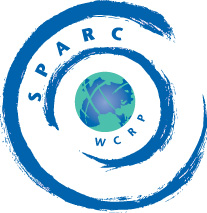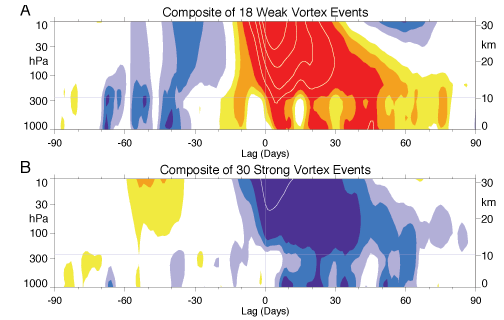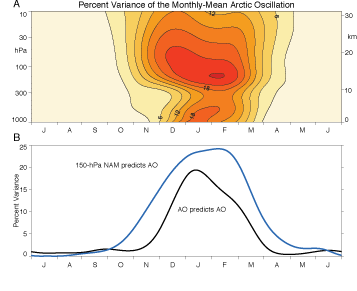
SPARC
Stratospheric Processes And their Role in Climate
A core project of the World Climate Research Programme
Publications (Newsletters / Reports)
S P A R C Themes
- What is the role of dynamical and radiative coupling with the stratosphere in extended-range tropospheric weather forecasting and determining long-term trends in tropospheric climate?
- By what mechanisms do the stratosphere and troposphere act as a coupled system?
3 - Stratosphere-Troposphere Dynamical Coupling
Theme leaders: M. Baldwin (USA), S. Yoden (Japan)
The troposphere influences the stratosphere mainly through a variety of atmospheric waves that propagate upward. Recent evidence shows that the stratosphere organises this chaotic wave forcing from below to create long-lived changes in the stratospheric circulation. These stratospheric changes can feed back to affect weather and climate in the troposphere. In the Northern Hemisphere, the connection can be described as a link between the strength of the stratospheric polar vortex and the dominant pattern of surface weather variability, the Northern Annular Mode (NAM).
When the NAM is positive, pressures are lower than normal over the polar cap but higher at low latitudes, with stronger westerlies at mid-latitudes, especially across the Atlantic. Northern Europe and much of the United States are warmer and wetter than average, and Southern Europe is drier than average. The NAM is very similar to the North Atlantic Oscillation (NAO). Variations in the strength of the polar vortex appear to induce changes to the surface NAM (Figure 1), but the dynamical processes are not well understood.
 |
Figure 1. Weather from above. A weakening (red) or strengthening (blue) stratospheric vortex can alter circulation down to the surface. The diagrams show composites of the NAM index. (A) Composite of 18 week vortex events. The thin horizontal line indicates the approximate tropopause (Baldwin and Dunkerton, 2001). For better resolution, please contact the SPARC Office |
However, it may be possible to use stratospheric information to improve weather forecasts beyond the seven to ten-day limit of weather prediction models (Figure 2). SPARC is also working toward improved seasonal weather forecasts through the WCRP’s Task Force on Seasonal Prediction.
 |
Figure 2. (A) Statistical predictability of the monthly-mean 1000-hPa NAM after a 10-day lead. The diagram shows that predictability is greatest during winter, and that the stratosphere provides better predictability than the troposphere. (B) Cross sections through (A) at 1000 and 150 hPa. (Baldwin et al., 2003). For better resolution, please contact the SPARC Office |
How will changes in stratospheric greenhouse gas concentrations and composition affect climate? Coupling to the stratosphere has the potential to alter patterns of surface climate change, and the surface response depends on whether the stratospheric vortex becomes stronger or weaker. At present, climate models do not agree as to how the stratospheric vortex will evolve with increasing greenhouse gas concentrations.
In addition to weather and climate, the stratosphere may also play a role in long-term variations in the polar ice pack, sea surface temperatures and deep ocean circulation, because the mid- and high-latitude oceans are sensitive to persistent changes in the NAM. The most pressing issue in stratosphere-troposphere coupling is to better understand the dynamical processes by which the tropospheric circulation responds to changes in the stratosphere.
A better understanding of stratosphere-troposphere coupling may help to better predict not only weather on monthly and seasonal time scales, but also the climatic effects of greenhouse gas increases, stratospheric ozone depletion, solar changes and volcanoes.
Go to: "Climate-Chemistry Interactions"
Go to: "Detection, Attribution, and Prediction of Stratospheric Change"
Last update : August 26, 2005
